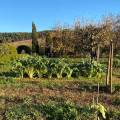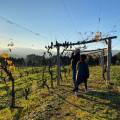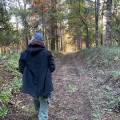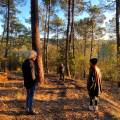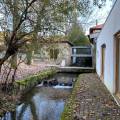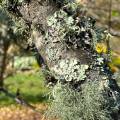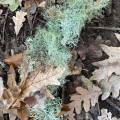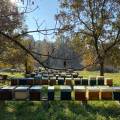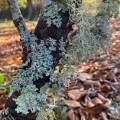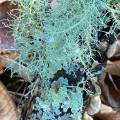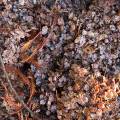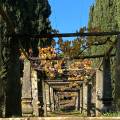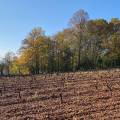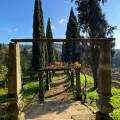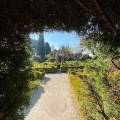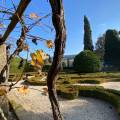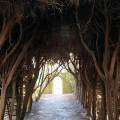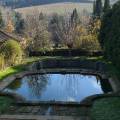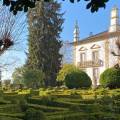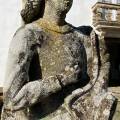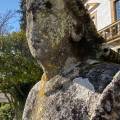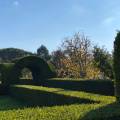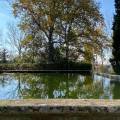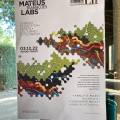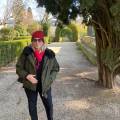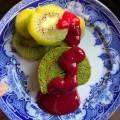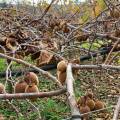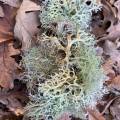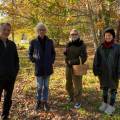Table of Contents
MATEUS LABS
Vila Real, Portugal - april/june/september/november 2023
Long Term Artistic Proposition for the Casa de Mateus
Year: 2023 (April / May / July / September / November)
Artist: Anne Marie Maes
Keywords:
keywords : environment / sustainability / transition / ecology / technology / awareness raising / critical reflection / artist studio / artistic production / workshops / participants /
Contemporary creators are already laying the foundations for a radicant art – radicant being a term designating an organism that grows its roots and adds new ones as it advances. To be radicant means setting one’s roots in motion, staging them in heterogenous contexts and formats, denying them the power to completely define one’s identity, translating ideas, transcoding images, transplanting behaviours, exchanging rather than imposing.
(Bourriaud, the Radicant)
Casa de Mateus : the Location
This is an artistic proposal for a long term site specific project, stretching over spring, summer and fall. The goal is to activate an on-site artistic production studio, in close collaboration with the local fab lab, and to develop works starting from primary materials collected on the domain of the Casa de Mateus. The focus will to be on biodiversity, sustainability and transition, and we’ll include elements from the local forests, vineyards, vegetable gardens, orchards, wild flower gardens and french gardens.
We would like to focus on creating a deep connection with the environment we are part of, specially with the “terroir” of the Casa de Mateus, and thus commit to encouraging cross-pollination with the local ecosystem.
We want to create an evolving project of new experiments and proven practices, all inspired by the rhythm, energy, beauty and inventiveness of nature. A project that thrills, inspires, challenges and delights local and national audiences, that stimulates community involvement and that attracts visitors from around the country.
Mateus Labs: The Studio
We will set up a permanent artist studio on the premisses of the Casa de Mateus. The Lab for Form & Matter is a long term project that emphasises the process. New works will be presented regularly, arising from workshops and performances during the year. Central to the project is the installation of the physical Lab. The set-up will be an 'Open Laboratory' in which we will process the bio-information that has been collected on the grounds of the Casa de Mateus. Gradually, a collection with all kinds of organic works of art will be growing. Through the bio-data from local flowers, plants and trees visualised in artworks, we will tell the story of this special place. In this Lab/Artist Studio, we will focus on the symbiotic relationships between living organisms - including plants, bacteria, insects and fungi. Starting from the microscopic, we will investigate the ecosystem of the Douro region by studying a range of organic elements proper to the domain. Besides materials for art production, lichens, plants, fungi and bacteria are also storytellers connecting us to our environment through their colours, their smells, the memories they evoke. Their stories will be processed in a series of new artworks, realised with ecological methods and creating new materials such as bio textiles and 'microbial skins.
the Process
Document the changing seasons and their impact on the ecosystem of
the Casa de Mateus :
- Capture the different moods and colors of each season
- Create artworks that highlight the biodiversity in plant species
- Use materials from the domain, such as plant parts, seeds, fruits, or vegetables
- Create works that explore themes such as growth, decay, or transformation
- Explore the use of living materials, such as plants or microorganisms
- Collaborate with the local FabLab. Create artworks that incorporate sensors, robotics, or other types of technology exploring the role of technology in shaping our understanding of the natural world.
- Explore the concept of time. Create artworks that incorporate elements that change over time, such as plants that grow or decay.
- Use the materials co-created by bacteria, algae, and insects to create artworks that reflect on the theme of symbiosis and interdependence in nature.
- Create artworks that incorporate materials such as lichens, fungi, and bacteria in a way that reflects on how these materials connect us to our environment and evoke memories.
the Workshops
- medicinal plants / gardening. 'Memories of the Trade Routes'. (list of seeds) + products to make
- eco printing. 'Echoes of the Trees'. (collecting & printing with plants) - alternativephotography.com
- fermenting (water kefir, kombucha) / bio textiles (short circuit / re-use)
- bio textiles / making big skins of fruit leather with the rests of the grapes
- processing (mushroom time)
Each workhop starts with a long walk to collect material for the next workshop. Prepare the organic material to dry. Store. Cook & Process in our kitchen-Lab.
- check April: canvas, cotton, linen. Local mud. Argile. Colors from plants. Cappilary actions of pigments on fabrics.
- Modder blokken persen.
- gebruikte coffie verzamelen, oude druiven, verse bloemen
- werken op geuren. Distilleren???
- samen met Jonathan en met Ferdi: 3D structuren printen. Organische vormen of strakke design van Azulejos. De bedoeling is dat deze prints als mal kunnen dienen voor het gieten van biotextielen met een blinddruk vorm. Daarna inoculeren met locale bacteria.
the Timeline
1. April 2023 : The set-up of an 'Open Laboratory' in which the artist processes the bio-information that has been collected on the grounds of the Casa de Mateus (close collab with FabLab and
BioLab). The installation of the studio will continue over the year. We immediately start with Hunting & Collecting spring flowers.
2. May 2023: Hunting & Collecting. Spring. New Life. Observation and inventory of medicinal plants. Picking, drying (for later use) and macerating for extraction of contents. Making products based on contents of the collected plants (cosmetics) and creating biotextile artworks
Alexander Gerner
Margarita Maximova
3. July 2023: We work with the fruit from the orchard. We create strong biotextiles with leftovers and learn how to minimize organic waste.
4. September 2023: The grape harvest (the Vintage) is now central to the production of our work. We learn about types of soil, the importance of bacteria, the right time to harvest, the making process, the leftovers and what can be made with them.
5. November 2023: Mushroom time. We take a close look on circular systems found in the natural world. We explore living systems as materials for our works.
These 5 workweeks can be planned in collaboration with people from the fablab and from the biolab. The purpose is that labs complement each other.
the Budget
1. Artist fee: 2500,-€ ex VAT. /project-week (5 days week + travel)
2. This includes a continuous completion of the studio, as a workshop and as an artistic installation.
3. This includes preparation of the topic, booklet with HowTo instructions, recipes and links for the participants.
4. This includes the artworks made in the studio.
5. Not included: travel, accommodation.
6. Not included: materials for artworks & workshops. Materials for artist studio. Hard ware (cooking fire, pots & pans, glass containers, … ) and consumables (agar agar, glycerine, gelatine, ethanol, …).
7. Max. participants per project week: 10 to 12 people over 2 days/ week.
8. The studio can be seen as an evolving installation, an exhibition that can be visited also when no workshop is going on.
9. There are yet many items in the storage rooms that can be usefull for furnishing the artist studio (stainless steel kitchen funishings, wooden/glass cabinets, chairs, tables, …)
calendar
21-25 February - research in Lisbon
offline March - the beginning of the spring. Planting of specific herbsand flowers to use in the workshops
16 - 21 April - Spring. Building up the workshop
23 - 29 May
4 - 10 July
August- Spring/Summer
This is a month full of fruits, cherries, red fruits (blackberries, raspberries, strawberries), a lot of flowers, and vegetables - August/September is the month of tomatoes and we have a lot in Casa de Mateus.
September
This is the month of the grape harvest - and it's very busy because of that.
October/November - beginning of autumn
The colors start to change. Harvests: chestnuts, walnuts. November it's the month of the mushrooms.
casa de mateus
‘O Tiger-lily,’ said Alice, addressing herself to a flower that was
waving gracefully about in the wind, ‘I wish you could talk!’
‘We can talk,’ said the Tiger-lily, ’when there’s anybody worth
talking to.’ Alice through the Looking Glass, Lewis Carroll.
RESEARCH
Portuguese Trade Routes / Spices:
Vasco da Gama and the Portuguese found the route around Africa to the spices of Southeast Asia in the 15th century. They began a period of conquests in India and Indonesia to control that trade. They built a spice empire centered in Goa, India that radiated out across the Indian Ocean from eastern Africa to Indonesia.
Valuable spices used in food preparation across Europe included pepper, ginger, cloves, nutmeg, mace, cinnamon, saffron, anise, zedoary, cumin, and cloves.
https://en.wikipedia.org/wiki/Spice_trade
- Tobacco
- Black Pepper
- Coffee beans
VERVEN met KLEI
Argile (fijne klei voor cosmetische doeleinden, DeSmecht), Groen, Rood, Wit
test 18.04.2023: 2 eetlepels rode klei, 2 eetlepels witte klei
aangebracht op katoen/linen vooraf gestijfd in suikerwater, dan gedroogd en dan klei aangebracht.
test 20.04.2023: linen ingesmeerd met suikerwater, laten drogen. Daarna bewerkt/geverfd met witte/roze klei met suikerwater, en bovenop natte klei suikerkristallen gestrooid.
2 maanden later: proberen een extra laag te leggen met shellac of met bioplastic.
VERVEN met PLANTEN
- Calendula officinalis
- Glebionis segetum, corn marigold
- lichen : oakmoss lichen or Evernia prunastri
usefull links:
verf uit planten
verven met rozenblaadjes
textile wiki
Mushroom_mordant Recipes
Mushroom_Dye
Cortinarius semisanguineus
Zwavelzwam
geel/rood uit Groot Dooiermos (lichen)
Natural Dyes from Plants, Lichen and Mushrooms
Lakmoes, pH indicator gewonnen uit Lichen Pigmenten
Colorants, Encres et Pigments des Végétaux
plantes à recolter
Anthotype Printing - printing with plant emulsions
VERVEN met MUSHROOMS
VERVEN met LICHEN
dye from lichen
1. 19.04.2023: mix of lichen (mainly oakmoss) in 2/3 water and 1/3 ammonia
cotton fabric inside pot, capplillation
2. 20.04.2023: foliose lichen from the Parmelia family, solution in only ammonia, afterwards diluted with a lot of waterParmelia saxatilis
INFORMATION on LICHEN
Ethnolichenology is the study of the relationship between lichens and people. Lichens have and are being used for many different purposes by human cultures across the world. The most common human use of lichens is for dye, but they have also been used for medicine, food and other purposes.
Journal of Biodiversity and Ecological Sciences
Lichens as bio indicators of atmospheric pollution in Porto, Portugal
ABSTRACT: The emission of air pollutants mainly from anthropogenic sources has led to the degradation of air quality. These pollutants determine the occurrence or worsening of respiratory disorders. Biomonitoring provides information on the quality of the environment or its modifications, having been used as an alternative to monitoring of chemical pollutants. The variation of the biodiversity of lichens can be used as a warning to check if other biological systems are being affected by atmospheric pollution. Continue reading in the pdf: https://recipp.ipp.pt/bitstream/10400.22/18826/1/ART_Marisa%20Freitas.pdf
Magazine of the Gulbenkian Gardens:lichen and mosses in January
https://gulbenkian.pt/jardim/en/garden/um-naturalista-no-jardim-gulbenkian/cinco-especies-de-musgos-e-liquenes-para-procurar-em-janeiro-e-fevereiro/
EXPERIMENTS met PSYLIUM
Do not use the bulk Psylium from Desmecht, it does not work!
On 20.04.2023 I did 3 tests with Psylium verasana.
1. medium measuring spoon: 20 x water; 4 x Psylium; 1 x Glycerine + Campèche ⇒ much too thick
2. medium measuring spoon: 24 x water; 4 x Psylium; 1 x Glycerine + 1/2 Curcuma ⇒ still thick but yet better
3. medium measuring spoon: 28 x water; 4 x Psylium; 1 x Glycerine + 1/2 Madder ⇒ correct viscosity for pouring it in the mold.
Drying time:
BIOPLASTICS met GELATINE
experiment in de oude vensterframe, Curcuma + koffiegruis
- 500ml water
- 100gr gelatine
- 25gr glycerine
- curcuma poeder
- achteraf: koffiegruis
EXPERIMENTS with AGARAGAR
Process: (heated) Ag02
- Agar agar: 12 grams
- Glycerol: 18 ml
- Water: 400 ml
Add agar, water and glycerine into a pot.
Cook over medium heat and stir until the solution starts to boil and becomes viscous.
With a spoon remove any froth, so that the bioplastic will have a glossy, smooth surface.
Tape down a wooden frame on a non stick surface and pour in the solution.
colored agar skins
FERMENTATION met SCOBY
https://research.annemariemaes.net/doku.php?id=fermentation_and_probiotic_bacteria#performance
https://wiki.fermenthings.be/produits/how-to-continuous-brew-your-kombucha-at-home/
- We set up the Scoby on 17.04.2023. After 2 days/nights (cold) in the lab, we transferred the Scoby to the kitchen in the house, to give it a more stable temperature.
- 2de residentie (mei 2023): 2 grote fermentations (elk 75cm x 75cm) opgezet in houten bakken uuitgelijnd met plastic.
WINOGRADSKI COLUMN
With Winogradski's columns, we are particularly interested in algal life in the water bodies on the grounds of Casa de Mateus. This often invisible part of the ecosystem will be investigated in the river near the residence and in the water of the large pond near the entrance. For this, we will make site-specific phenomenological observations and take on-site samples. Then we will make indoor ocular observations using microscopy and DIY biology to observe these living algae samples collected on site and raised in our Lab for Form & Matter. The practice of cultivating and studying these life forms as a form of environmental engagement is also explored.
On 19.04.2023
1. mud from the river (at the house, a lot of grind), water from the river
2. mud from river + vegetable garden (red, powdery), water from the river
3. mud from the garden (front garden), water from the lake (front garden)
+ 3 eggs (for sulfur nutrition);
+ enough dry leaves clippings ; + newspaper/cardboard clippings ; + oat flakes ⇒ all for carbohydrates
top off with river-, rain- or pond water.
Met de kolommen van Winogradski interesseren we ons in het bijzonder voor het algenleven in de watermassa's op het terrein van Casa de Mateus. Dit vaak onzichtbare deel van het ecosysteem zal worden onderzocht in de rivier vlakbij de residentie en in het water van de grote vijver bij de ingang. Hiervoor doen we site-specifieke fenomenologische waarnemingen en nemen we monsters op locatie. Daarna doen we indoor oculaire waarnemingen met behulp van microscopie en DIY biologie om deze levende algenmonsters, verzameld op het terrein en opgekweekt in ons Lab for Form & Matter, te observeren. De praktijk van het cultiveren en bestuderen van deze levensvormen als een vorm van milieu-engagement wordt ook onderzocht.
COSMETICA
Goudsbloemzalf is een universeel middel bij bijna alle huidproblemen. De zalf biedt bescherming voor droge, gevoelige en geïrriteerde huid. Als een beschermende en herstellende vette crème is ze geschikt voor de dagelijkse behandeling van handen.
recept 1:
Pluk een handvol bloemen van de Calendula bij zonnig en droog weer. Verwijder de kelkbladeren en stop ze in een glazen pot met de amandelolie. Duw de bloemen goed onder de olie. Verwarm de pot ongeveer 48 uur au bain-marie op 40-50°C. Zeef vervolgens de bloemen uit de olie met een fijne zeef en filter het na door een koffiefilter. Dit gaat langzaam, dus geef de olie de tijd om er rustig doorheen te druppelen. De olie heeft een prachtige oranjegele kleur. Als de olie gezeefd en gefilterd is, weeg je er 30 g van af met een keukenweegschaal. Verwarm dit samen met de was au bain-marie, tot de was gesmolten is. Dit is ongeveer bij 65°C. Laat de substantie al roerend afkoelen tot rond de 40°C. Voeg ten slotte een paar druppels etherische olie toe (lavendel) en roer het goed door het mengsel heen. Giet het mengsel snel in een zalfpotje en laat het opstijven.
recept 2:
- Maak maceraat door bloemen in olie te weken
- Laat de geplukte bloemblaadjes circa een uur drogen, zodat het vocht uit de blaadjes verdampt.
- Neem een schoon potje.
- Vul dit potje voor driekwart met geplukte bloemblaadjes van de goudsbloemen en giet vervolgens het potje vol met amandelolie.
- Dit laat je 4 weken op een warme zonnige plaats staan, bijvoorbeeld in de vensterbank. Tip: Zorg dat de blaadjes goed onder de olie blijven staan, anders gaat het schimmelen. Dus af en toe even schudden.
- Na 4 weken zeef je de blaadjes uit de olie.
- Bewaar de olie op een donkere en koele plek. Dan is de olie zeker een jaar houdbaar.
- Meng een gedeelte van de goudsbloemolie met bijenwas of carnaubawas in de volgende verhouding: 1 deel was op 6 delen olie.
- Verwarm de was samen met de olie langzaam middels au-bain-marie totdat de was gesmolten is.
- Giet het warme mengsel over in een steriel gemaakt potje.
- Laat het warme mengsel goed afkoelen en bewaar het vervolgens in de koelkast.
- Plak een etiket met de datum op het potje. De zalf is een half jaar houdbaar, omdat er geen conserveringsmiddelen in zitten.
FELT WORKSHOP
workshop July - warm felting
- op de tafel gemaakt met schragen en kippegaas wordt de ruwe wol gekaard (picking), zodat het vuil op de grond kan vallen. (dag 1)
- de ruw gekaarde wol wordt daarna gewassen in (warm) water met sodabicarbonaat. Hiervoor lauw water in het bad laten lopen en er bicarbonaatpoeder in oplossen. 100gr soda per 1kg wol. Ruwe wol moet dus eerst gewogen worden, en nadien in het water gedaan en stilaan warmer water toevoegen,maar stapje per stapje, anders risico op directe vervilting. Steeds heter water toevoegen, zodat de lanoline in de wol kan oplossen. Een nacht laten staan. (dag 1)
- vorige stap herhalen indien de wol zeer vuil is. (dag 2)
- gewassen wol laten drogen op doeken, bovenop de tafel met kippegaas. (dag 2)
- wol kaarden met drum kaardmachine. (dag 3)
- gekaarde wol kleuren met plantenextracten, warm of koud, eventueel eerst behandeling met aluin. (dag 3 en 4)
- geverfde wol laten drogen, eventueel nogmaals extra kaarden. (dag 3 en dag 4)
- nat vilten: op een groot vel bubbelplastic de gekaarde wol in kleine plukjes kruiselings over mekaar leggen in een dikke laag. Kleurencompositie maken. Met een kleine handgieter en zeep opgelost in heet water de wol 'besproeien'. Eventueel bedekken met een laag tule zodat de plukjes niet verschuiven. Ondertussen de bubbels eruit wrijven met vingertoppen. Steeds harder gaan masseren. Het werk bedekken met een 2de vel bubbelplastic, en opwinden rondom een rubber stok, met een handdoek eromheen. Masseren met handen of voeten, deze laatste stap meermaals herhalen en ondertussen controleren of de vervilting goed 'pakt'. (dag 5 = publiek workshopdag)
- na de volledige vervilting de wol 'laten schrikken' door deze een paar keer van hoog te laten vallen. (dag 5)
- de zeep uitspoelen (eventueel) uit de vilten lap. (dag 5, dag 6)
- plat laten drogen in de zon. (dag 6)
⇒ zie fotoos voor resultaat!
lijst materiaal:
- weegschaal tot 5kg
- schragen met daarop een stevig kader (± grootte van een binnendeur) en waarvan de uitsnede bedekt is met kippengaas. Deze geïmproviseerde tafel dient om de ruwe schapenvacht te kuisen (picken), en door het kippengaas kunnen de vuile deeltjes in de wol makkelijk op de grond vallen.
- badkuip voor eerste wasbeurt schapenvacht (na 'picking')
- neutrale vloeibare zeep (1l)
- sodium bicarbonaat (1kg)
- 4 sorteer containers (zwarte plastic containers)
- drum carding machine
- aluin, om de wol voor te bereiden op plantaardige verfbeurt
- 2 rollen 'bubble plastic' van 1m breed x 10m lang
- waterkoker
- handgieter met sproeikop, max. 5l - (moet kokend water kunnen bevatten)
- een stuk 'tule' om de wolcompositie te bedekken tijdens het vilten
- genoeg schragen en tafelbladen (hout) om met de workshop participanten op te kunnen werken tijdens het vilten.
- extra materiaal: aluminium papier, keukenrol papier, kleine sproeier (1l) om gericht mee te sproeien
- grote oude badhanddoeken
lokale verfplanten:
- rose petals
- oak moss lichen
- grape leaves
- eucalyptus bark
- Hypericum perforatum
- Buddleia davidii
ruwe wol wassen: ruwe wol wassen
wol wassen : wol wassen
drum carder: drum carder — drum carder– classic carder
hand paddles for carding
wool / bubble plastic / soap / alum / natural pigments / plastic gloves
vb: Stefanie Salzmann
Firoozehsoltanzadeh@gmail.com - +351-916513629
FABLAB COLLAB: symbionts and biofictions
For the upcoming lab-week, I would especially like to try out 2 things in collab with the fablab tools.
I explain it already a little bit, so that we are prepared regarding the tools (CNC, 3D printer) and that we have the necessary supplies (filaments, wood, printheads, cutting drills):
1. I would like to make some wooden moulds (with the CNC) with designs of azulejos and/or with designs after nature. In these moulds, I will dry the kombucha skins (so that they take the form of the design in the mould) but we will also cast some biotextiles in the moulds. So after carving the design with the CNC, we’ll have to make the wood waterproof with a varnish or grease material.
Here is an example of a Kombucha-skin that I dried into a plexi mould, designed with a CNC
Imagine this pine cone overgrown with 3D printed ‘kind of lichen’ … (mixed with the real lichen)
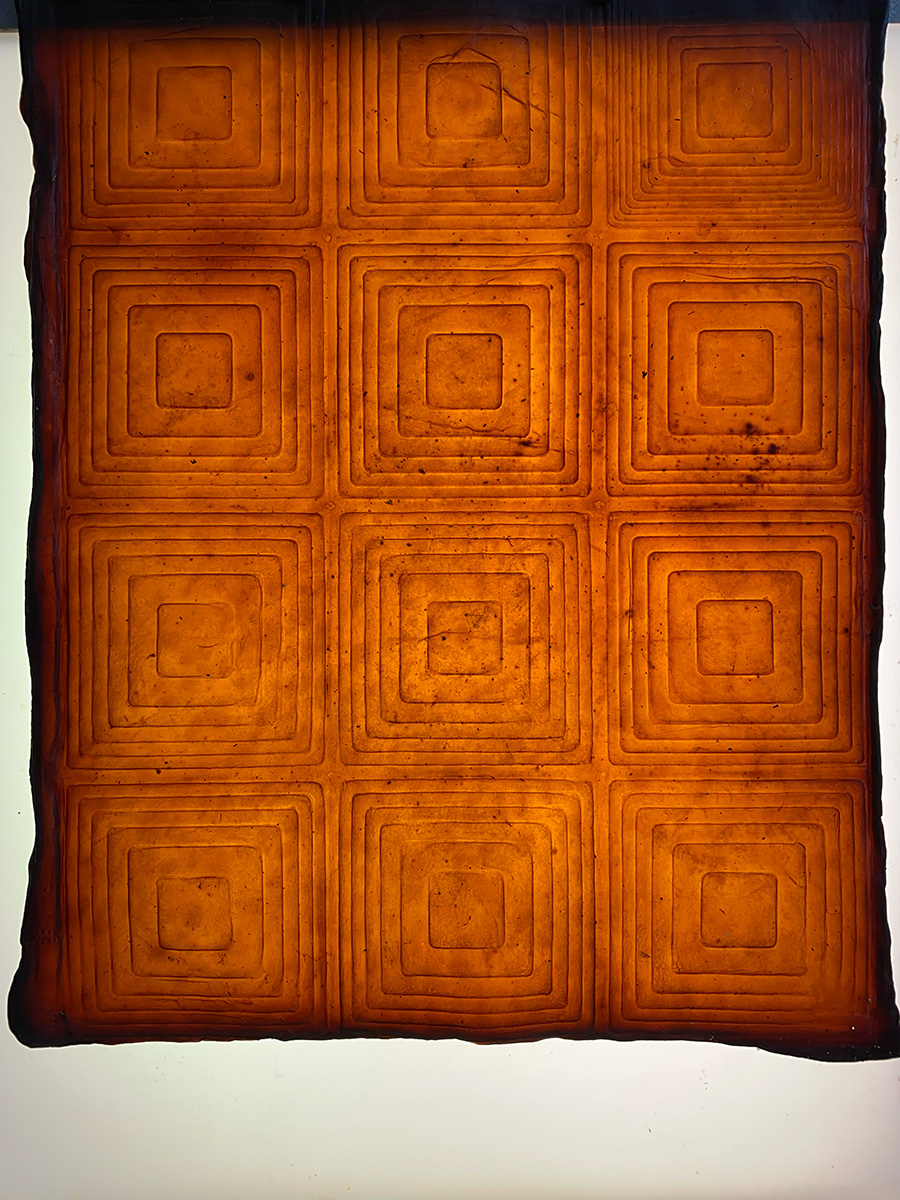
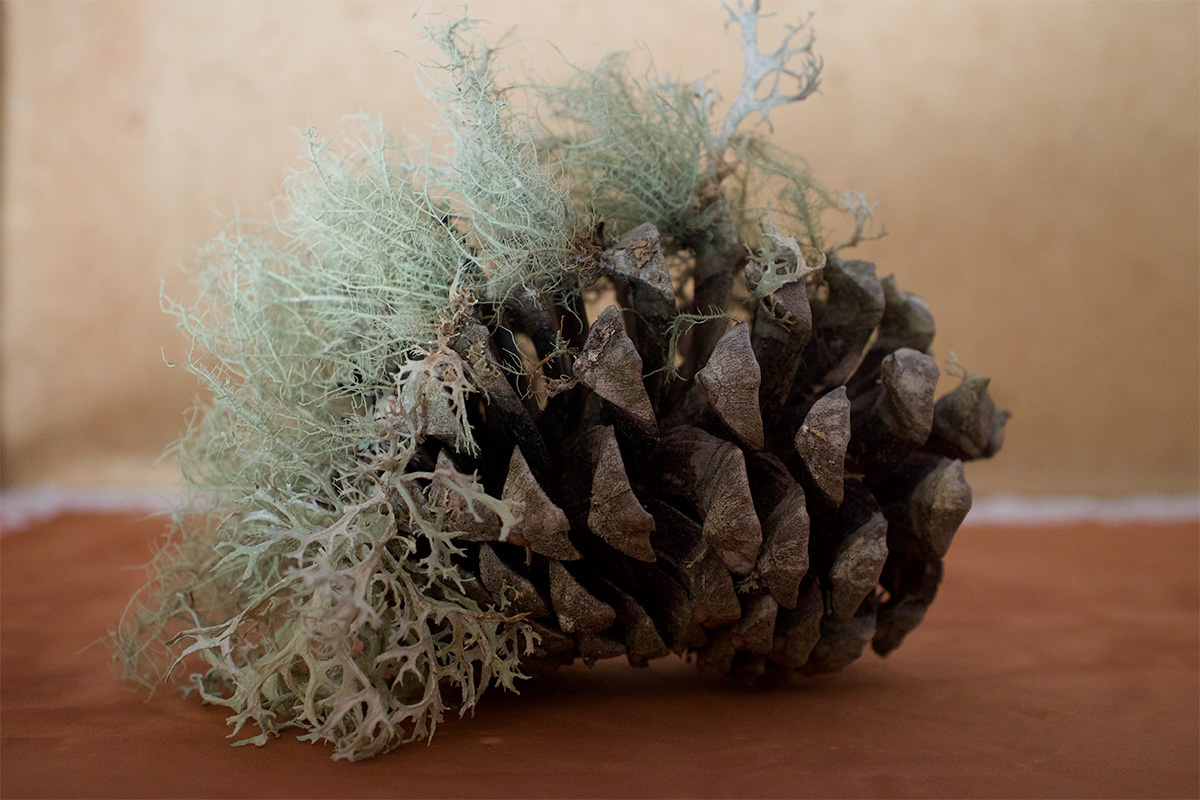
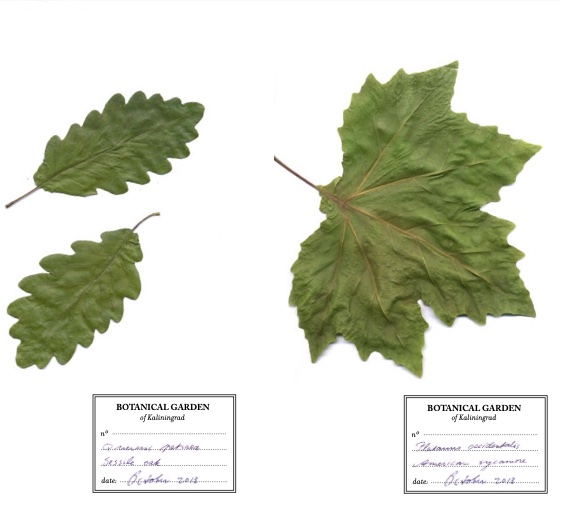
2. I would also like to 3D print some extensions to organic materials (twigs and branches, stones, other).
I see this rather fine and small, some lace-like fine designs ressembling lichen and other natural materials, we have to decide the possibilities together. Here is for ex. a pine cone overgrown with lichen.
3. A'Lab for Form and Matter'-herbarium-identification stamp printed in 3D.
INFORMATION
Through the Looking-glass and what I Found There
Through the Looking Glass and what Alice found there
Fondation Serralves
museum contemporary art, casa, farm, gardens ⇒ Serralves develops its activities around 5 strategic axes: Artistic Creation, Audience Formation and Awareness-Raising, The Environment, Critical Reflection on Contemporary Society and The Creative Industries.
Makery food info
energy from wastewater
Books & References
future materials bank
notion.so-mateus
Radical Matter
Fermentation
Over Rot
Inmaken
Mountaincutters / Myriam Mihindou / Minia Biabiany /
Michel François / Edith Dekyndt / Katinka Bock / Nathalie Doyen (ceramics)

